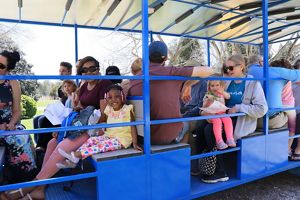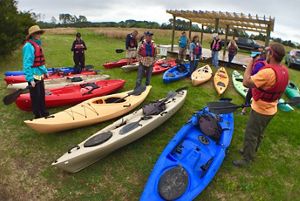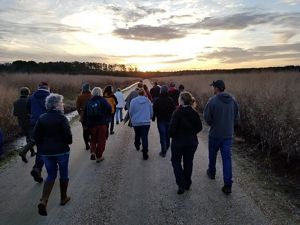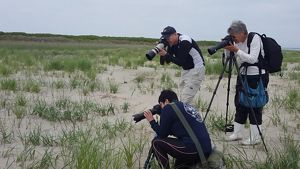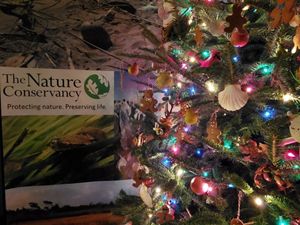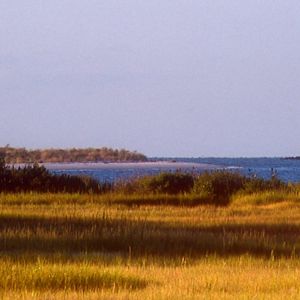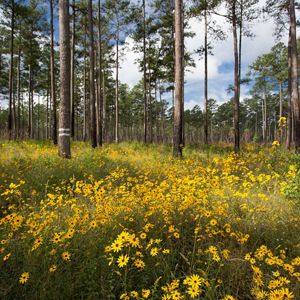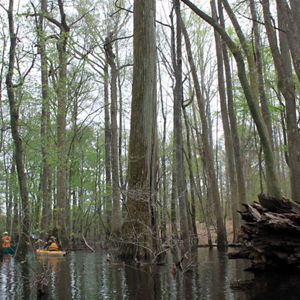Download the audio file (.mp3)
From this observation deck, looking across the marsh towards Hog and Parramore islands in the distance, you can get a real feel for the human history on Brownsville Farm. It’s hard to imagine, but cows once grazed the salt meadow, and the cedar fence posts you see in front of you and to the left are evidence of that.
You can see from some of the salt marsh grass that’s around us that saltwater does rise this high, otherwise it wouldn’t be able to grow, but at a low tide, it can be mostly dry and mud.
To the southeast—off to the right a bit—is a hummock, an island in the marsh, where centuries ago, Native Americans discarded their empty clam and scallop shells in neat stacks along the bank.
To the far south—off to your right—lie the remains of the old causeway that connected the farm to the hummock, but storms and extreme tides have pulled it apart.
If you stay here long enough, you’re likely to see more than one great egret stalking crabs in the marsh, maybe even a green heron or possibly a little blue (heron).
Standing at this point and taking in this view, it’s not hard to see why The Nature Conservancy works so hard to protect places like this for generations to come.
As you walk along the trail—and at this point in particular—you’ll see occasional manmade things like PVC pipes sticking up, that look like they may not belong. Brownsville Farm, while being a beautiful habitat preserved by The Nature Conservancy, is also a working scientific research area, and many scientists, grad students, and other researchers will come here to study local flora and fauna, salinity levels, sea level rise—any number of things. So, as you walk along the trail, if you see something that looks like it may be a scientific experiment, it probably is!

